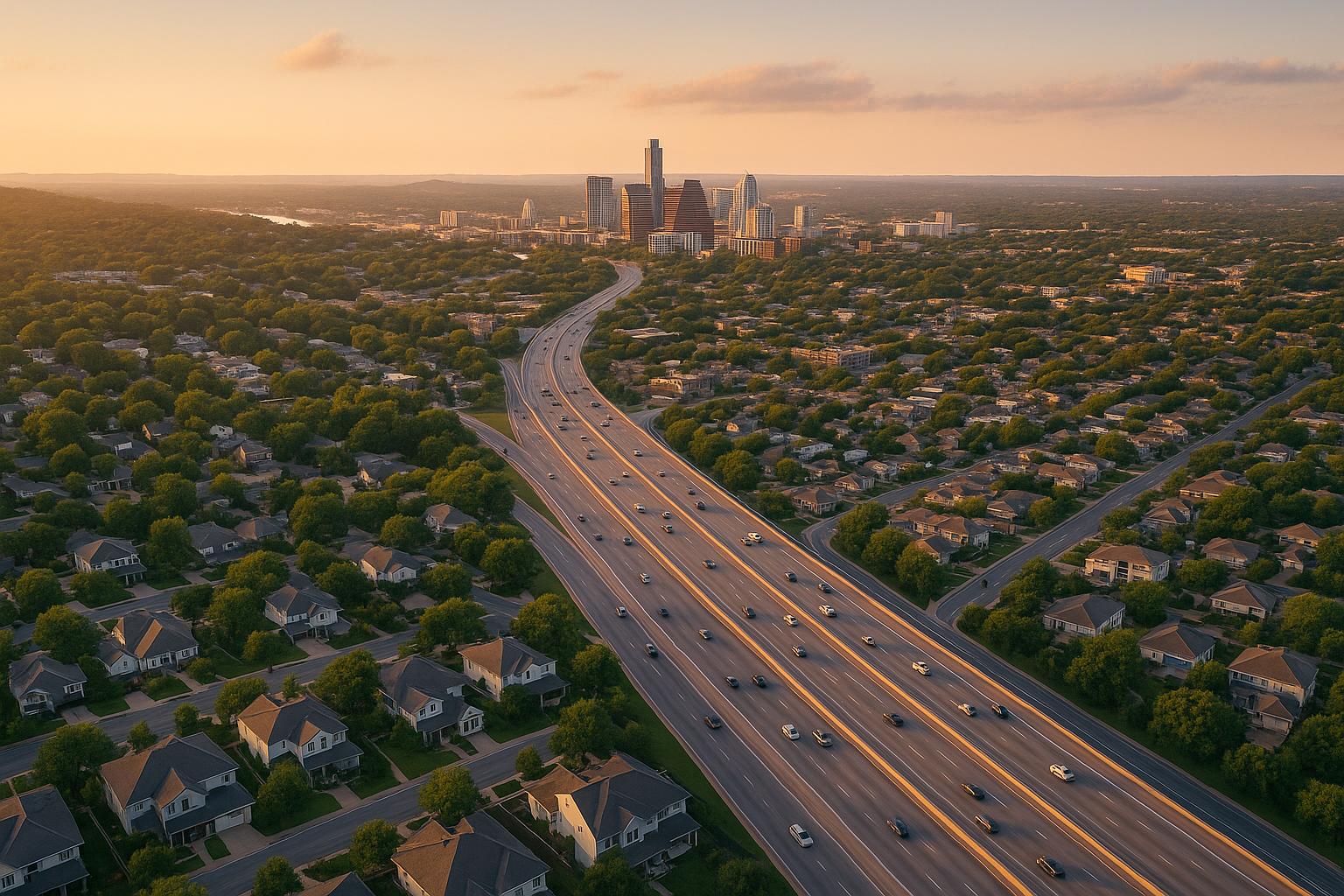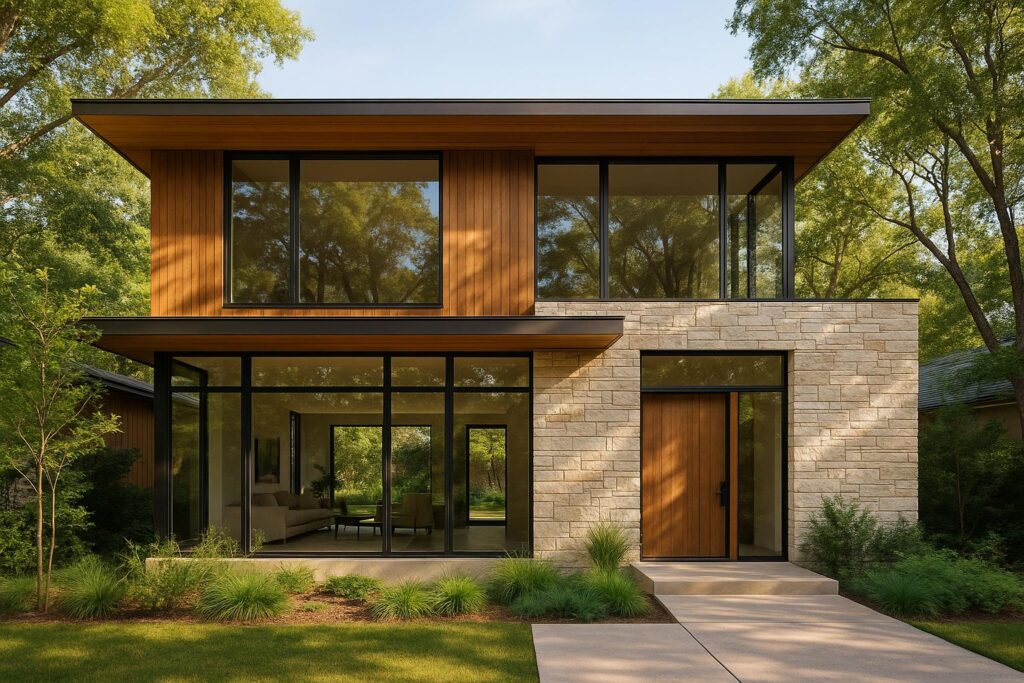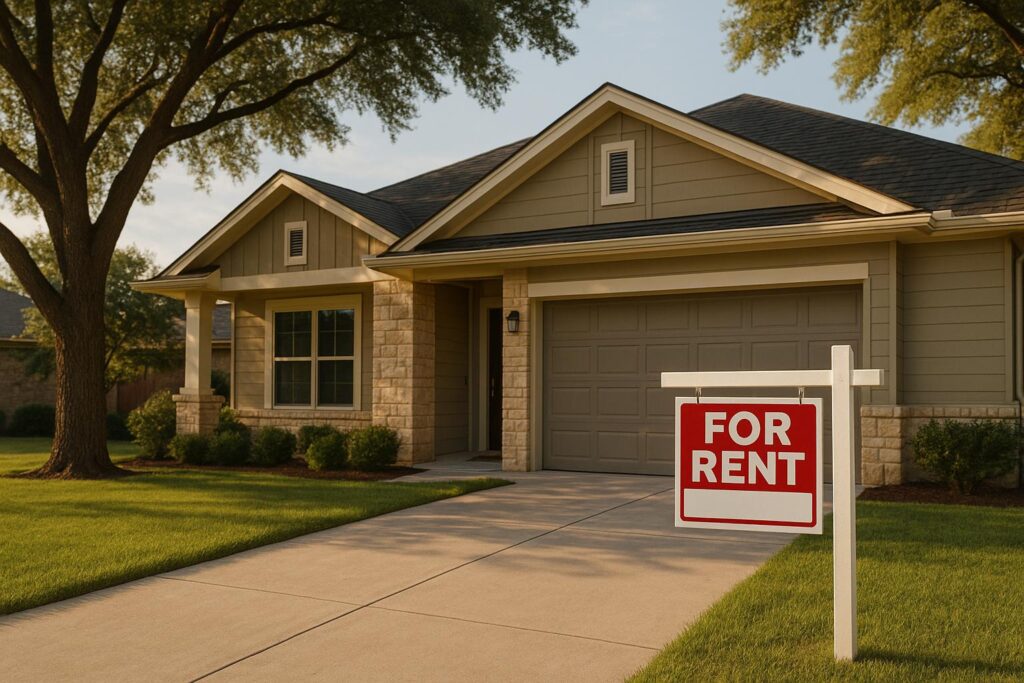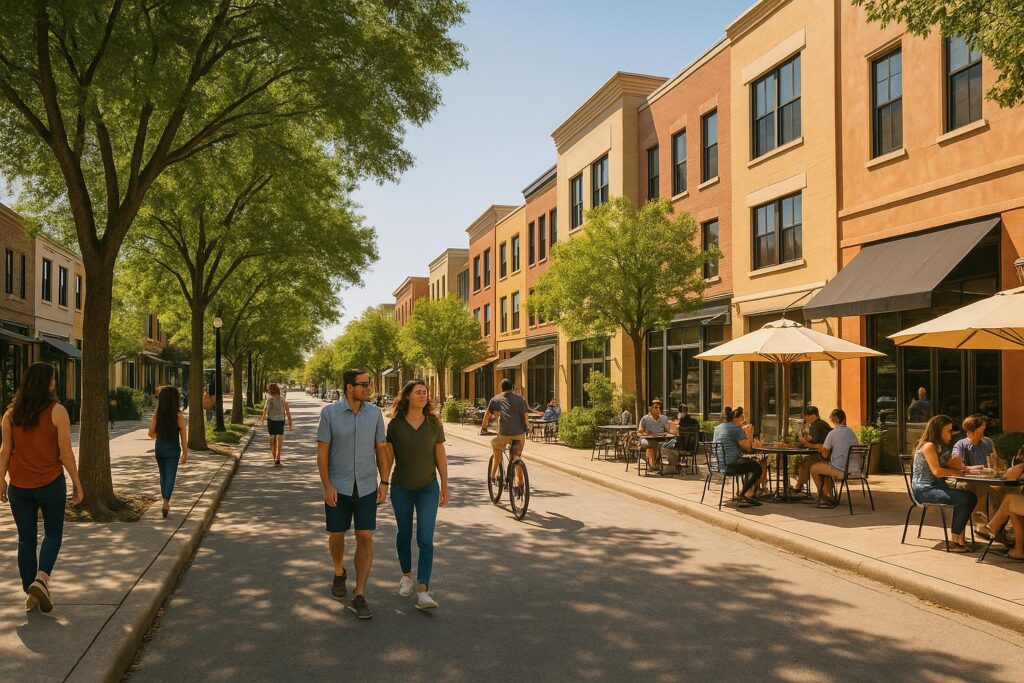Your commute in Austin depends on where you live. Here’s what you need to know:
- Cedar Park/Leander: Commutes range from 30–40 minutes. Toll roads like 183-A help save time, and MetroRail offers a $3.50 alternative.
- Kyle/Buda: Commute times vary from 25–40 minutes, heavily influenced by I-35 traffic. Departure timing is crucial to avoid delays.
- Tarrytown/Rollingwood: Central locations with the shortest average commutes (16–17 minutes). Limited public transit options.
- Manor/Elgin: Commutes range from 20–30 minutes. Future transit projects like the Green Line aim to improve access.
Quick Comparison
| Neighborhood | Average Commute Time | Peak Hour Impact | Transit Options | Key Features |
|---|---|---|---|---|
| Cedar Park/Leander | 30–40 minutes | +10–15 minutes | MetroRail, Toll Roads | Toll lanes cut travel times |
| Kyle/Buda | 25–40 minutes | +10–15 minutes | I-35, Bus Services | Traffic-prone I-35 corridor |
| Tarrytown/Rollingwood | 16–17 minutes | +10–15 minutes | Limited Public Transit | Close to downtown, minimal delays |
| Manor/Elgin | 20–30 minutes | +10–15 minutes | US-290, Express Bus Service | Upcoming Green Line transit project |
Choose a neighborhood based on your commute priorities – time, cost, or convenience.
I Ranked Austin’s BEST & WORST Suburbs! (2025 List)
1. Cedar Park and Leander
Cedar Park and Leander, two suburbs located north of Austin, each come with their own set of commuting challenges. Cedar Park, situated about 20 miles from downtown Austin, generally offers shorter commutes compared to Leander, which is 30 miles away.
The primary route connecting these communities to Austin is US Highway 183, which handles a heavy load of 50,000 to 90,000 vehicles daily in both directions. To address traffic congestion, the 183 North Mobility Project aims to significantly cut commute times:
| Commute Type | Expected Time Savings by 2035 |
|---|---|
| Toll Lane Commute | 9-minute total journey |
| Non-toll Morning Commute | 24 minutes faster |
| Non-toll Evening Commute | 16 minutes faster |
For those seeking alternatives to driving, the MetroRail Red Line offers a direct route to downtown Austin from both Cedar Park and Leander. A one-way ticket is priced at $3.50, and ridership in Leander has surged by an impressive 788% between 2020 and 2023.
"If I had to drive my truck downtown it would have cost me $360 a month", says Paul Fawver, referring to the combined expense of tolls and gas.
"It’s a long commute, but if I didn’t take the toll it would be exponentially longer for me", adds Christianne Burke.
Residents also have access to various public transportation options, offering flexibility in managing their daily commutes:
| Transportation Option | Cost |
|---|---|
| Regular Bus Service | $1.25 per ride |
| Monthly Transit Pass | $33.25 |
| CapMetro Vanpool | 50% subsidy available |
| Guaranteed Ride Home Program | $5 annual membership + up to 4 emergency rides |
In addition to public transit, major roads like RM 1431 and the 183A Toll Road provide additional routes for drivers. Navigating commutes in Cedar Park and Leander often requires a mix of these transportation choices to balance cost and time.
Next, we’ll explore the commuting landscape in Kyle and Buda, shedding more light on Austin’s diverse transportation network.
2. Kyle and Buda
South of Austin along the I-35 corridor lie Kyle and Buda, two communities where commuting plays a significant role in daily life. With 80% of residents traveling to Austin for work, transportation options are crucial. Let’s break down how departure times impact commute durations.
Morning rush hour kicks off around 7 a.m., with traffic starting to build near Buda. Here’s how commute times vary depending on when you hit the road:
| Departure Time | Average Commute Duration | Conditions |
|---|---|---|
| 6:40 a.m. | 30 minutes | Light traffic |
| 7:00–8:00 a.m. | 35–50 minutes | Peak congestion |
| 8:30 a.m. | 30 minutes | Post-rush hour |
| 4:30–5:00 p.m. | 45+ minutes | Evening peak |
A significant portion of Kyle’s workforce – 62% – commutes out of the city, with Austin (38%) and San Marcos (24%) being the top destinations.
I-35 serves as the lifeline connecting these areas to downtown Austin, but it’s far from smooth sailing. This highway regularly faces heavy congestion, frequent accidents, and ongoing construction projects. Commute times can range from a manageable 30 minutes during lighter traffic to a grueling 1.5 hours at peak times. Adding to the challenge, parking in areas like the University of Texas is both scarce and pricey. To complicate matters further, a major section of I-35 is slated for construction over the next decade.
Several efforts aim to ease the strain on commuters:
| Initiative | Description | Impact |
|---|---|---|
| SchoolPool Program | A carpooling initiative for parents in Hays County launching in Spring 2024 | Reduces school-related traffic |
| Alternative Routes | South Congress Avenue often provides a quicker option during I-35’s busiest times | Saves time for drivers |
| Toll Roads | New toll road infrastructure has helped alleviate some of I-35’s congestion | Improves traffic flow |
These measures are making a difference. Drivers save an average of $125 annually and reclaim 34.5 hours previously lost to delays. Since 2020, solo driving has dropped by nearly 8%, reflecting a growing shift toward shared and alternative transportation options.
3. Tarrytown and Rollingwood
Tarrytown and Rollingwood, both located in West Austin, provide relatively short commutes to downtown. Tarrytown is about a 10-minute drive to the city center, while Rollingwood is similarly close. However, during peak hours – 7:00–8:00 a.m. in the morning and 4:00–5:00 p.m. in the evening – traffic can add some extra time. Morning commuters should plan for an additional 12 minutes for every 30 minutes of travel, while evening trips may require about 19 extra minutes. Below, let’s take a closer look at commute times for residents in each neighborhood.
Commute Durations
For Tarrytown, commute times break down as follows:
| Commute Duration | Percentage of Residents |
|---|---|
| 0–14 minutes | 18% |
| 15–29 minutes | 24% |
| 30–59 minutes | 3% |
| 60+ minutes | 1% |
In Rollingwood, the commute statistics are slightly different:
| Commute Duration | Percentage of Residents |
|---|---|
| 0–14 minutes | 7% |
| 15–29 minutes | 18% |
| 30–59 minutes | 6% |
| 60+ minutes | 0% |
Transportation and Accessibility
Tarrytown’s transportation infrastructure reflects its suburban feel. The area scores 55 for walkability and 68 for bikeability, meaning it’s moderately friendly for pedestrians and cyclists. However, with a Transit Score of just 30, public transportation options are limited. That said, Capital Metro’s Pickup service is available here, offering rides for $1.25 per trip.
Several factors shape the commuting experience in these neighborhoods:
| Factor | Impact | Consideration |
|---|---|---|
| Direct Routes | Enfield Road to 15th Street | Provides a direct route to the medical district |
| Alternative Transport | CapMetro Pickup Service | Available in Tarrytown |
| Traffic Patterns | Peak Hour Delays | Heaviest traffic occurs during 7–8 a.m. and 4–5 p.m. |
| Infrastructure | Limited Public Transit | Both neighborhoods rely heavily on cars |
Additional Highlights
Tarrytown stands out for its quick access to downtown, while Rollingwood is known for its highly rated schools and low crime rates. These features make both neighborhoods desirable, depending on what you’re looking for. Stay tuned for a detailed area comparison chart in the next section.
sbb-itb-4c99469
4. Manor and Elgin
Manor (12 miles) and Elgin (25 miles) both offer commutes that depend on traffic and route choices, making travel times vary slightly. Below is a closer look at typical commute durations and how peak hours can affect them.
Commute Duration Analysis
During busy traffic periods, expect an additional 12 minutes in the morning and 19 minutes in the evening for every 30 minutes of travel. Here’s how the numbers break down:
| Location | Distance to Downtown | Average Commute Time | Peak Hour Addition |
|---|---|---|---|
| Manor | 12 miles | 30 minutes | +12–19 minutes |
| Elgin | 25 miles | 25 minutes | +12–19 minutes |
"It’s usually very congested, so it takes me maybe a good 45 minutes or so to get to work".
Transportation Options and Costs
Commuters from Manor and Elgin have several transportation choices, each with its own costs and availability:
| Transportation Method | Manor Options | Elgin Options | Monthly Cost |
|---|---|---|---|
| Public Transit | RideCARTS, CapMetro buses | Express 990 bus | $41.25 (Local) / $96.25 (Commuter) |
| Toll Road (290 East) | Available | Available | ~$43+ (for TxTag users) |
| Ride-sharing | Uber, local cabs | Limited options | Variable |
Manor’s mayor highlighted the toll road’s impact on local traffic:
"The toll road channels heavy traffic into Manor’s edge".
"We’re trying to get ahead of the problem before it gets to be like Austin".
Future Transit Developments
CapMetro’s Project Connect plans to introduce a Green Line that will connect Manor and Elgin to Austin. This service is expected to function similarly to the Red Line, which currently serves 1,800 weekday riders. These transit expansions aim to ease travel times and provide more efficient options for commuters.
Commuting Statistics
Manor’s commuting habits, as of 2013, show the following breakdown:
| Commuting Method | Percentage (2013) |
|---|---|
| Drive Alone | 80% |
| Public Transit | ~5% |
| Carpool/Other | ~15% |
Meanwhile, the Express 990 bus connecting Elgin and downtown Austin sees an average of 85 daily boardings. For those using the 290 East toll road, here’s a snapshot of costs:
- TxTag Users: $1.08 per direction
- Pay By Mail: $1.44 per direction, plus a $1 processing fee
- US 183 Connection: $0.54 (TxTag) or $0.72 (Pay By Mail)
These upcoming transit projects are part of a broader effort to simplify commutes and reduce congestion across the Austin area.
Area Comparison Chart
The charts below summarize commute data to help you quickly compare travel times and transit options across different neighborhoods. This breakdown makes it easier to evaluate which areas align with your commuting needs.
| Neighborhood | Average Commute Time | Peak Hour Impact | Transit Options | Notable Features |
|---|---|---|---|---|
| Cedar Park/Leander | 30–40 minutes | +10–15 minutes | 183-A Toll Road | Toll road helps avoid I-35 bottlenecks |
| Kyle/Buda | 25–40 minutes | +10–15 minutes | I‑35 driving, bus service available | Commute times fluctuate with I‑35 traffic |
| Tarrytown/Rollingwood | 16–17 minutes | +10–15 minutes | CapMetro Bus, MoPac Expressway | Central location offers the shortest average commute |
| Manor/Elgin | 20–30 minutes | +10–15 minutes | US‑290, Express Bus service | Convenient downtown access via US‑290 |
Primary Routes by Area
| Primary Routes | North Areas (Cedar Park/Leander) | South Areas (Kyle/Buda) | Central Areas (Tarrytown/Rollingwood) | East Areas (Manor/Elgin) |
|---|---|---|---|---|
| Main Corridors | 183-A Toll Road, US-183 | I‑35 | MoPac Expressway, local roads | US‑290, SH‑130 Toll Road |
Central neighborhoods like Tarrytown stand out for their convenience, with zip code 78703 reporting an average commute of just 16.5 minutes. This highlights the perks of living closer to downtown compared to outlying areas.
Experts emphasize the impact of commute times on daily life:
"Due to people living further and further away from the city, even though the amount of people commuting is going down, their commute times are going up."
- Romic Aevaz, Policy Analyst, Eno Center for Transportation
"It has huge quality of life implications if you’re not spending that much time in the car."
- Jen Duthie, Managing Engineer, Austin’s Transportation Department
These insights and comparisons can guide you in choosing a neighborhood that fits your lifestyle and commuting priorities.
Summary and Recommendations
The analysis highlights how selecting the right neighborhood can significantly impact your daily commute. Central neighborhoods like Tarrytown offer the convenience of shorter travel times, while areas farther out require careful planning to manage commutes effectively. Below are key strategies to help streamline your daily travel:
Strategic Timing
Peak hours (7:00 AM to 9:00 AM and 4:00 PM to 6:00 PM) can significantly slow down your commute. Plan to leave earlier or later during these times to avoid heavy traffic.
Cost vs. Location
Living in central neighborhoods like Mueller and Tarrytown comes with higher housing costs – median prices exceed $950,000 – but the trade-off is less time spent commuting. On the other hand, more affordable neighborhoods, such as Windsor Hills ($259,667) and Garrison Park ($310,044), may require longer travel times.
| Commute Strategy | Benefits | Considerations |
|---|---|---|
| Toll Roads | Faster travel times, especially in traffic | Additional toll fees may apply – consider whether the time saved justifies the cost. |
| Public Transit | Reduces stress and avoids parking fees | Check CapMetro schedules to ensure routes align with your needs. |
| Alternative Routes | Helps bypass traffic bottlenecks | May require trial and error to find consistently reliable paths. |
Smart Transportation Choices
Thanks to a partnership between the Central Texas Regional Mobility Authority and CapMetro, buses and registered vanpools can now use toll roads at no cost, offering a practical solution for commuters.
Future Developments
The upcoming 183 North Express Lanes, expected to be completed by 2026, will link directly to the MoPac Express Lane. This project is set to benefit commuters from areas like Cedar Park and Leander, potentially cutting down travel times. Such developments make living closer to work even more appealing.
"It has huge quality of life implications if you’re not spending that much time in the car."
- Jen Duthie, Managing Engineer, Austin’s Transportation Department
For tailored advice on Austin’s housing market and commute solutions, reach out to the Austin Local Team.
FAQs
How does rush hour traffic affect commute times in Austin neighborhoods?
Rush hour traffic in Austin can seriously affect commute times, especially during peak hours – usually 7:00 AM to 9:00 AM and 4:00 PM to 6:00 PM. Depending on the route and location, drivers might face delays ranging from 10 to 35 minutes. Major arteries like I-35 and Mopac are often the most congested during these periods.
With Austin’s population steadily increasing, traffic issues have only grown worse. On average, residents lose about 32 hours each year stuck in congestion. To navigate these challenges, it’s helpful to plan ahead, consider alternate routes, or adjust travel schedules to avoid the busiest times.
What new transit projects are planned for Manor and Elgin, and how will they impact commute times?
Exciting changes are coming to transit options for Manor and Elgin, thanks to the planned extension of the Green Line under Austin’s Project Connect initiative. This new route will link downtown Austin to Colony Park, with future stops in Manor and Elgin. Residents will gain a quicker, more dependable alternative to navigating busy roads like U.S. 290. Along the way, new transit stations will make getting around easier and cut down travel times for daily commuters.
In addition, the recently completed Austin to Manor Trail now connects Manor to Austin’s trail system. This scenic route offers a safe, environmentally friendly way for cyclists and pedestrians to travel, while also helping to reduce traffic during rush hours. Together, these developments promise to improve mobility, lessen reliance on cars, and make commuting smoother for those in these expanding communities.
What’s the best way to balance cost and convenience when commuting in Austin?
Balancing cost and convenience in Austin largely hinges on your travel habits and financial preferences. Toll roads, like the MoPac Express Lane, provide a quicker commute during rush hours, with costs ranging from $3.50 to $15 per trip. For frequent users, this could add up to $100 to $200 a month. These roads are a great option if saving time is your top priority.
On the other hand, public transit offers a budget-friendly alternative. Capital Metro’s MetroExpress, for example, starts at $3.50 for a single ride, with monthly passes priced at about $96.25. This option not only cuts down on commuting costs but also eliminates tolls and helps reduce traffic congestion.
To decide what works best for you, think about how often you travel, your budget, and how much time you’re comfortable spending on the road.





